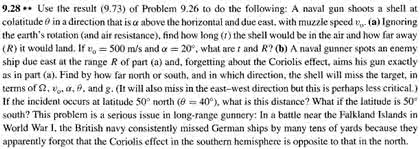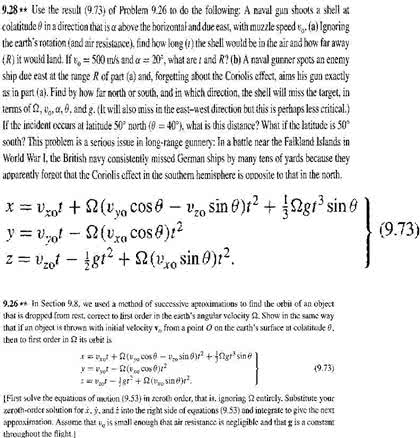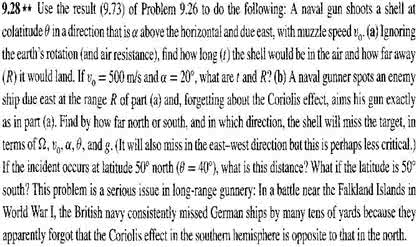GEOG 2050 Chapter : Weekly Activity Three

Chapter Two: Weekly Exercise
Part One: Seasonality and Insolation
In this part of the weekly activity, you will learn about the seasons and how the seasons influence the
amount of energy received at the Earth's surface for different latitudes. Please view and complete each
section to finish the activity. You will need to print out a worksheet for this activity and you will
need a ruler and colored pencils or markers to complete this activity offline without your
computer.
Remember Latitude?
Before we start this week's activity, recall what we have learned so far about latitude. By definition,
latitude (parallel) is the angular distance north or south of the equator, measured from the center of
Earth. In other words, lines of latitude run east to west but are described as degrees north and south of
the equator (0 degrees). Last week, we started to discuss the importance of the following five lines of
latitude:
1. Equator (0 degrees)
2. Arctic Circle (66.5 degrees N)
3. Antarctic Circle (66.5 degrees S)
4. Tropic of Cancer (23.5 degrees N)
5. Tropic of Capricorn (23.5 degrees S).
At this point, you might be asking yourself why these five parallels are so important? Look at Figure
GT.18 of Living Physical Geography or Figure 1.15 of Geosystems and you start to see general
latitudinal zones across Earth. These zones between the important lines of latitude listed above have
different types of climate and weather thus are given special names. Now that you recognize or
acknowledge latitudinal zones exist across Earth, the next question you must ask is why do they exist
and why are these lines of latitude important? Go to the next page and the complete the rest of the
activity to find out why.
Video on Earth’s Tilt
The tilt of the Earth’s axis is the primary reason the Earth has seasons. Watch the YouTube video to
learn how the tilt produces season as the Earth revolves around the Sun.
http://www.youtube.com/watch?v=O9hawBb3wbk.
Plane of the Ecliptic
Examine Figure 2.2 of Living Physical Geography or Figure 2.13 in Geosystems, shown below. These
images show the Earth and the Earth's tilt. The Earth revolves around the Sun along the plane of the
ecliptic or the Earth's orbital path. The Earth's tilt is measured with respect to the perpendicular (90
degrees) to the plane of the ecliptic. The North Pole, or the rotation axis of the Earth, is 23.5 degrees
from the perpendicular to the plane of the ecliptic. This angle is why the Tropic of Cancer and Tropic
of Capricorn are located at 23.5 degrees North and South, respectively. The angle from the rotation
axis to the plane of the ecliptic is 66.5 degrees. This angle is why the Arctic and Antarctic circles are
located at 66.5 degrees North and South, respectively.

1) After watching the video on the seasons and referring to the figure, describe what happens to the
North Pole on the:
June Solstice ___________________________________________________________________
March Equinox _________________________________________________________________
December Solstice ______________________________________________________________
Sun’s Energy (Insolation) across Earth Surface
Examine Figures 2.4 and 2.5 of Living Physical Geography or Figure 2.8 of Geosystems, shown below.
This image shows the Sun's energy distribution on the surface of the Earth at the equinoxes. The most
direct sunlight occurs at the equator while the other latitudes have oblique rays that spread the Sun's
energy over a larger surface area. The latitude the direct rays fall on the Earth is called the subsolar
point and this occurs when the Sun is directly overhead at noon and the Sun's altitude is 90 degrees. On
the equinoxes, the subsolar point is located at 0 degrees North or the equator and declination is 0 degrees.
For the other locations on the Earth's surface, the Sun's energy intersects the Earth at an oblique angle
(i.e., less than 90 degrees).
Earth's revolution around the Sun
Watch the animation below and note how the day length changes, position of the subsolar point, when
the equinoxes, and solstice occur.
http://media.pearsoncmg.com/bc/bc_0media_geo/interactiveanimations/noqzs/022_EarthSun_HS_GG_I
ns.html
Earth’s Revolution
Examine Figures 2.7 - 2.11 of Living Physical Geography or pages 52 and 53 (9th edition) of
Geosystems. This image below shows the Earth as it revolves around the Sun producing the seasons, as
viewed from above the Sun. Please note the North Pole is always pointed in the same direction and how
day length (duration) changes with the seasons. The bottom two figures show the solstices with the
important latitudes labeled.
Examine the Worksheet
Print the worksheet on Moodle to complete the next part of the activity (click on link or worksheet in
this week's section ion Moodle). Look at the top left figure in the worksheet and the image below (they
are the same). This is the June Solstice and is the same as the previous figure but is drawn on the
worksheet. The other three diagrams are the December Solstice, March Equinox, and September
Equinox. Assume the Sun is in the center of the worksheet with sunlight shining on the Earth’s surface,
similar to previous figure. The side of the Earth facing the Sun is receiving solar energy; the side facing
away from the Sun is dark. The line between dark and light of the Earth is the Circle of Illumination.
The Earth travels around the Sun along the Plane of the Ecliptic (see Figure 2.2 of Living Physical
Geography or Figure 2.14 of Geosystems). This plane is constant and does not change. The Plane of
Equator is the plane that contains the Equator and it appears to shift with seasons when viewed from
space (see Figures 2.7 - 2.11 of Living Physical Geography or pages 52 and 53 of Geosystems, or the
previous figure in the activity). The axis of rotation is the line that connects to North and South Poles as
the Earth spins on this axis once every day and it is always at 90 degrees to the Equator and the Plane of
Equator but not the Plane of the Ecliptic. These planes and axis on the top left diagram are labeled for
Document Summary
In this part of the weekly activity, you will learn about the seasons and how the seasons influence the amount of energy received at the earth"s surface for different latitudes. Please view and complete each section to finish the activity. You will need to print out a worksheet for this activity and you will need a ruler and colored pencils or markers to complete this activity offline without your computer. Before we start this week"s activity, recall what we have learned so far about latitude. By definition, latitude (parallel) is the angular distance north or south of the equator, measured from the center of. In other words, lines of latitude run east to west but are described as degrees north and south of the equator (0 degrees). Gt. 18 of living physical geography or figure 1. 15 of geosystems and you start to see general latitudinal zones across earth.




